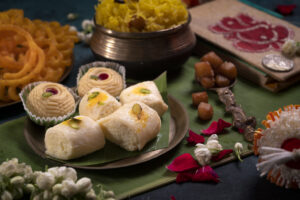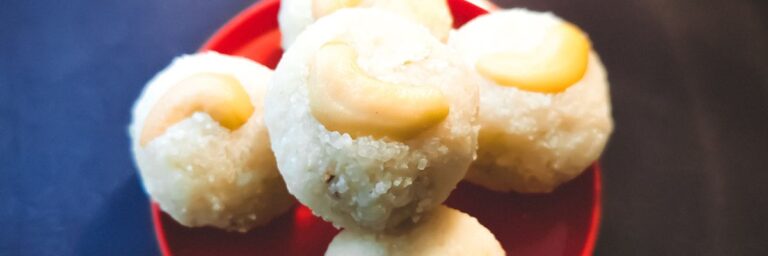Authentic Litti Chokha Recipe from Bihar
Cuisine: Bihari
Litti Chokha is a beloved Bihari dish that beautifully blends flavor and tradition. The dish consists of round wheat flour balls filled with roasted gram flour and spices known as Litti, served alongside Chokha, a mash of eggplant, tomatoes, and potatoes. Traditionally enjoyed during festivals and family gatherings, Litti Chokha showcases a unique rustic flavor, with a crunchy exterior and a soft, spicy filling that tantalizes the taste buds. Originating from Bihar, it is a dish that carries the cultural heritage of this vibrant state.
Variations of Litti Chokha
While Litti Chokha is a staple, variations exist, such as Baida Litti, which includes an egg filling, or variations with different spices according to regional preferences. However, the classic Litti Chokha remains unparalleled in its authenticity and communal spirit, often prepared in large quantities during festivals and family gatherings.
Ingredients for Litti Chokha
| Whole Wheat Flour | 2 cups |
| Roasted Gram Flour (Sattu) | 1 cup |
| Mustard Oil | 4 tablespoons |
| Ginger (grated) | 1 tablespoon |
| Green Chilies (finely chopped) | 2 |
| Garlic (minced) | 1 tablespoon |
| Chopped Coriander Leaves | 2 tablespoons |
| Potatoes (boiled and mashed) | 2 |
| Brinjal (Eggplant) | 1 large |
| Tomato | 1 large |
| Salt | to taste |
Preparation Method for Litti Chokha
Creating the perfect Litti Chokha requires a few steps, but it’s worth the effort for the delightful flavors you’ll create.
- In a bowl, mix the wheat flour with a pinch of salt and water to knead into a soft dough. Let it rest for 30 minutes.
- In another bowl, mix the roasted gram flour (sattu), ginger, green chilies, garlic, coriander, and salt. Add a tablespoon of mustard oil to enhance the flavor.
- Divide the dough into small balls; flatten each ball and fill it with the sattu mixture. Pinch to seal and shape into a ball.
- Boil water in a pot and steam the Litti until cooked thoroughly (about 30 minutes).
- For the Chokha, roast the brinjal and tomato over an open flame until the skin is charred. Peel the skins and mash the vegetables with boiled potatoes. Season with mustard oil and salt.
- Once the Litti is cooked, serve it hot with Chokha and a drizzle of ghee.
Nutritional Information for Litti Chokha
Approximate Nutrition per Serving (Litti with Chokha):
| Calories | 280 |
| Protein | 8g |
| Fat | 12g |
| Carbohydrates | 40g |
| Fiber | 6g |
When and How to Serve
Litti Chokha is ideal for family meals and gatherings, making it a great choice for Kids and Office Tiffin. The dish is wholesome enough to provide energy for a busy day, and its unique flavors make it appealing to both adults and children. Serve it with a side of yogurt or pickle for an extra touch of zest!
Cultural Background of Litti Chokha
Litti Chokha is much more than just a dish; it represents the heart of Bihari culture. Traditionally made during special occasions and festivals, it is often associated with communal cooking, where families come together to prepare this delicious meal. The folklore surrounding Litti Chokha suggests it was originally a food for travelers, providing a hearty meal that could be easily carried due to its durable nature and nutrition. Today, it continues to evoke memories of family ties, nurturing relationships, and celebrating heritage.
Starting a Business Around Litti Chokha
If you’re considering starting a food business centered around Litti Chokha, there are ample opportunities to tap into regional and ethnic markets. While there are several competitors, such as local eateries and catering services, the unique aspect of homemade Litti Chokha can be your selling point. The authentic taste and rich cultural narrative can attract customers looking for a genuine experience.
Pros and Cons of a Litti Chokha Brand
Pros include the potential for a strong brand identity rooted in culture, the ability to cater to vegetarian and health-conscious customers, and growing interest in regional cuisine. However, challenges may arise in terms of scaling up production while maintaining quality, and competing with established food chains. Conduct thorough market research to understand your audience and refine your product offering.






